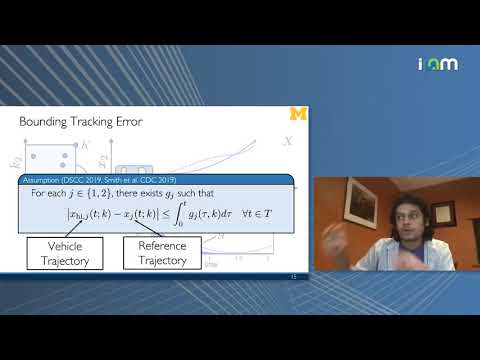Description:
Explore a comprehensive lecture on autonomous vehicle control that bridges the gap between safety and real-time performance. Delve into the Reachability-based Trajectory Design (RTD) method, which combines offline Forward Reachable Set (FRS) computation with real-time trajectory planning. Learn how RTD ensures safety and dynamic feasibility while maintaining efficient planning speed. Discover the method's approach to obstacle representation, persistent feasibility, and its application in various simulations and hardware demonstrations. Gain insights into improving vehicle safety, planning hierarchies, and verification methods such as the Funnel Library. Examine practical examples, including trajectory parameterization, tracking error bounding, and experiments with CarSim full powertrain. Understand how RTD addresses challenges of limited sensor horizons and unpredictable environments in autonomous vehicle operation.

Bridging the Gap Between Safety and Real-Time Performance for Autonomous Vehicle Control
Add to list
#Computer Science
#Artificial Intelligence
#Autonomous Vehicles
#Engineering
#Electrical Engineering
#Control Systems